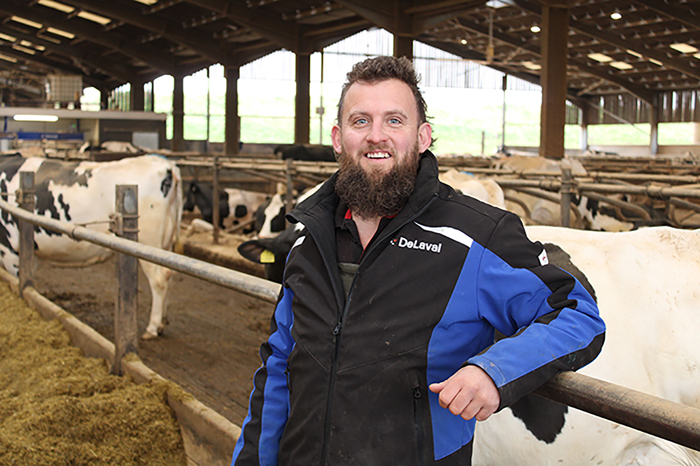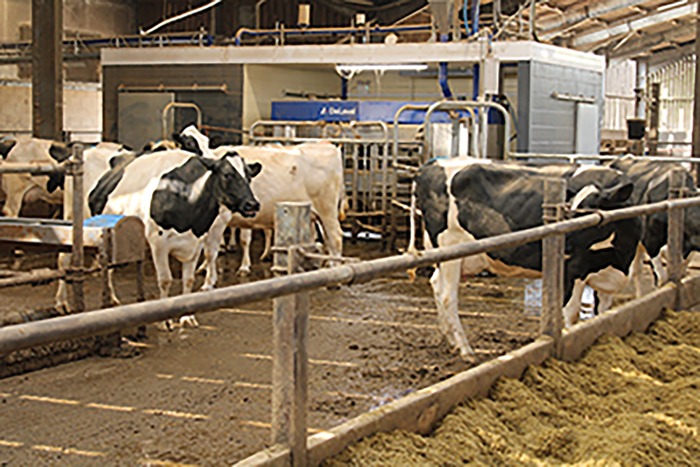Hartpury secures dairy future with milking robots
Hartpury University and College installed two DeLaval VMS V300 robots at its Home Farm, in September 2024, to improve the efficiency of its dairy and provide its students with the opportunity to understand and work with the new technology.

“We chose DeLaval robots to drive the performance of our dairy herd. We currently milk 110 through the robots and have seen our milk yields increase by over 15 percent. At 185 days in milk, the cows are still averaging 40 kilos a day. We also milk 85 cows through a parlour, and having both gives our students conventional and robotic milking experience,” says herd manager Bryan Carter.
The cows milked through the robots are housed all year and have become quieter and calmer since having the option to choose when to be milked.
“We are averaging 3.2 milkings per day through the robots compared to the standard two we were able to with the parlour. Mastitis cases have reduced to less than 12 per 100, which is down from 17. We have also seen foot health improve because we have a free access robotic system so the cows stand for less time than when waiting for the parlour,” he says.
Teat health has improved with robotic milking, a benefit that Mr Carter believes is due to the unique robotic arm and milking cups on the DeLaval VMS robots.
“We chose the VMS system because the robot arm more closely mimics the action of a human arm. The four-quarter milking has helped reduce teat end damage and mastitis cases, especially with cows that may have been overmilked in the parlour,” he explains.
The herd is fed to yield, and the cow’s diet has not changed since the shift to the robots.
“We are not feeding any more concentrate and still average around 13 kilos per cow per day. The robots operate a permission system to only allow access when a cow has sufficient milk, rather than when it wants to access more food,” he says.
Fertility in the robot herd has improved and fewer servings are required. The cows are also exhibiting stronger heat, making them easier to detect and serve effectively.
“We are under two straws per conception, with the robot herd, which has saved us time and money but is also making managing the all year-round system easier,” he adds.
The dairy unit has also invested in a DeLaval OptiDuo feed replenishing robot which automatically pushes food up and has an auger which lifts and refreshes it during the process.
“It is great for the students to see the new technologies available to dairying and experience how robots can provide more time for us to improve milking efficiencies,” he says.

The robots collect and provide far more cow health and productivity data than a parlour. This is interpreted and displayed by DeLaval’s DelPro system in a dashboard-like user interface.
“Having robot data is helping our decision-making but it is also important to help educate the students. The cows and the robots have bedded in well and we may look to close our parlour in the future and fit more robots to make the dairy entirely robotic,” he concludes.